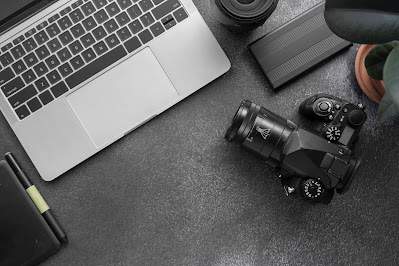Yvette Heiser - Macro Photography vs Close-Up Shots- What's the Difference?
Photography enthusiasts often use the terms "macro" and "close-up" interchangeably, but these techniques are distinctly different. Understanding the fundamental differences between macro photography and close-up shots will elevate your photographic skills, help you choose the right equipment, and enable you to capture stunning detailed images that showcase the intricate beauty of small subjects.
Defining True Macro Photography
Macro photography has a precise technical definition: it occurs when the subject is reproduced on the camera sensor at life-size or larger, expressed as a magnification ratio of 1:1 or greater. For example, photographing a butterfly that measures 25mm in real life means its image on your camera's sensor should also measure 25mm at 1:1 magnification.
Following guidance from Yvette Heiser Macro Photography Tips and Techniques for Stunning Close-Up Shots, true macro lenses are specifically designed to achieve this magnification ratio while maintaining exceptional sharpness and minimal distortion. These specialized lenses allow photographers to capture extraordinary detail invisible to the naked eye, revealing textures, patterns, and structures that transform ordinary subjects into extraordinary visual experiences.
Understanding Close-Up Photography
Close-up photography refers to any photograph taken at a short distance from the subject, typically with magnification ratios between 1:10 and 1:2. While these images show subjects in greater detail than standard photography, they don't achieve the life-size reproduction that defines true macro work.
According to Yvette Heiser Texas: Using Photography to Enchant the World, close-up shots can be captured using various equipment, including standard lenses at their minimum focusing distance, telephoto lenses, or by adding close-up filters and extension tubes to regular lenses. This flexibility makes close-up photography more accessible to beginners and photographers working with limited budgets.
Key Technical Differences
1)Magnification Ratio: Macro photography achieves 1:1 or greater magnification, while close-up photography typically ranges from 1:10 to 1:2.
2)Working Distance: Macro lenses often require positioning extremely close to subjects, sometimes just inches away, whereas close-up photography allows greater working distance.
3)Depth of Field: True macro photography produces an extremely shallow depth of field, often measuring just millimeters, requiring precise focusing techniques. Close-up shots offer slightly more forgiving depth of field.
4)Equipment Requirements: Macro photography demands specialized macro lenses or significant lens modifications, while close-up photography can be achieved with standard lenses and simple accessories.
5)Image Quality: Macro lenses are engineered for exceptional edge-to-edge sharpness and minimal aberrations at close focusing distances, delivering superior image quality compared to adapted standard lenses.
Equipment Considerations
For photographers serious about macro work, investing in a dedicated macro lens (typically 60mm, 90mm, or 105mm focal length) provides optimal results. These lenses offer the precise magnification ratios and optical quality necessary for professional macro photography.
Close-up photographers can achieve impressive results using more affordable alternatives such as extension tubes that increase magnification by moving the lens farther from the sensor, close-up filters that screw onto existing lenses like magnifying glasses, or reversing rings that mount lenses backward for increased magnification.
Practical Applications and Subject Matter
Macro photography excels when capturing tiny subjects like insects, flower stamens, water droplets, or product details requiring extreme magnification. The incredible detail revealed makes macro ideal for scientific documentation, nature photography, and artistic exploration of miniature worlds.
Close-up photography suits a broader range of subjects including portraits with environmental context, food photography, small product shots, and general detail work where life-size magnification isn't necessary. This versatility makes close-up techniques valuable across multiple photography genres.
Shooting Techniques for Each Style
Successful macro photography requires sturdy tripods to eliminate camera shake, careful manual focusing for precision, adequate lighting often from ring flashes or LED panels, and focus stacking techniques to extend the shallow depth of field.
Close-up photography offers more flexibility with handheld shooting in many situations, autofocus capabilities that often work effectively, natural lighting that frequently suffices, and simpler composition without extreme depth of field constraints.
Choosing the Right Approach
Your choice between macro and close-up photography depends on your specific needs. Select macro photography when your creative vision requires capturing minute details at life-size or larger magnification, when documenting small subjects for scientific or commercial purposes, or when exploring the hidden complexity of everyday objects.
Choose close-up photography when you need greater working distance from subjects, when your budget limits specialized equipment purchases, when shooting moving subjects that require faster focusing, or when capturing context alongside detail matters to your composition.
Both techniques offer rewarding creative opportunities that reveal fascinating perspectives often overlooked in everyday life.




Comments
Post a Comment